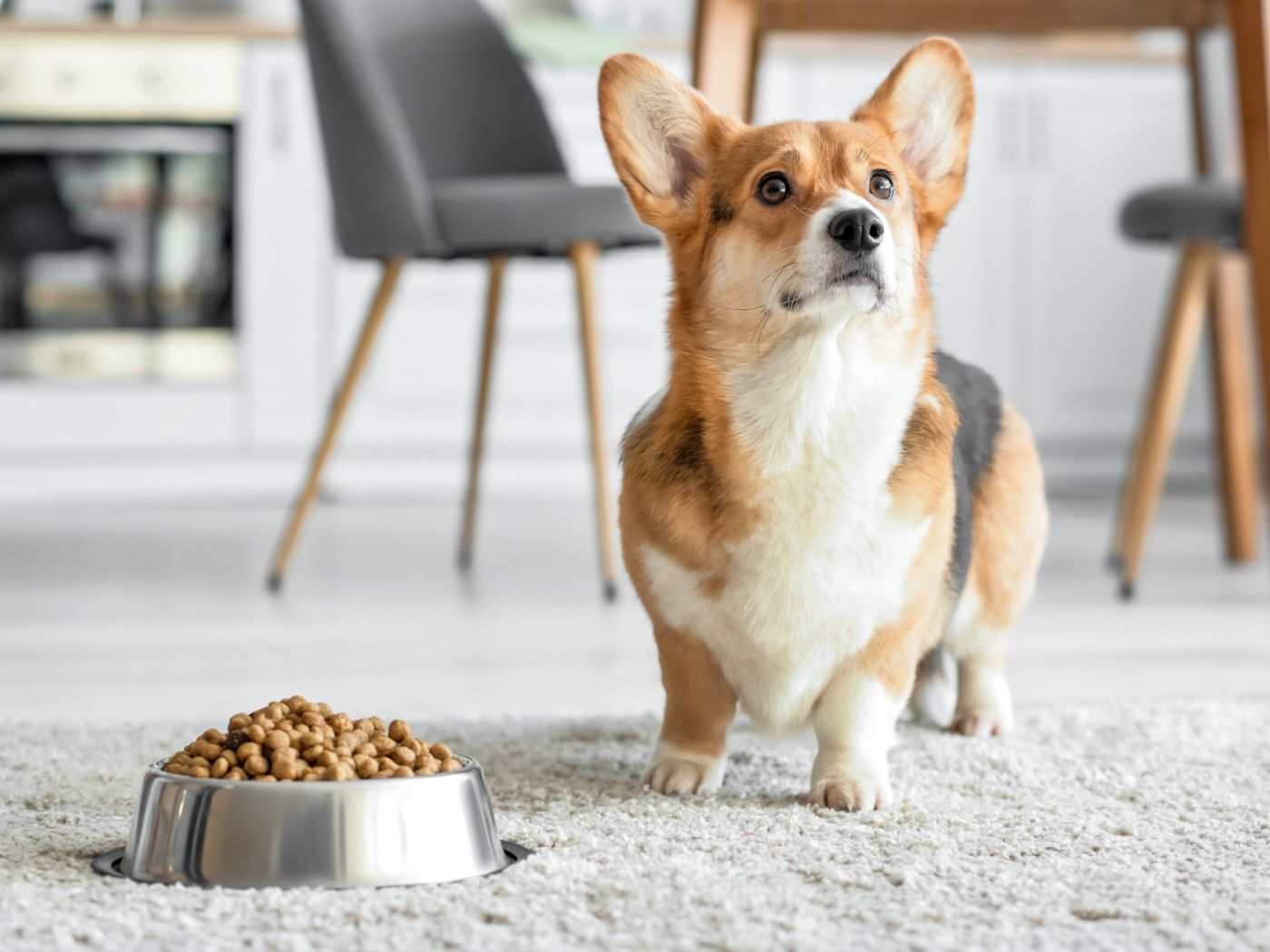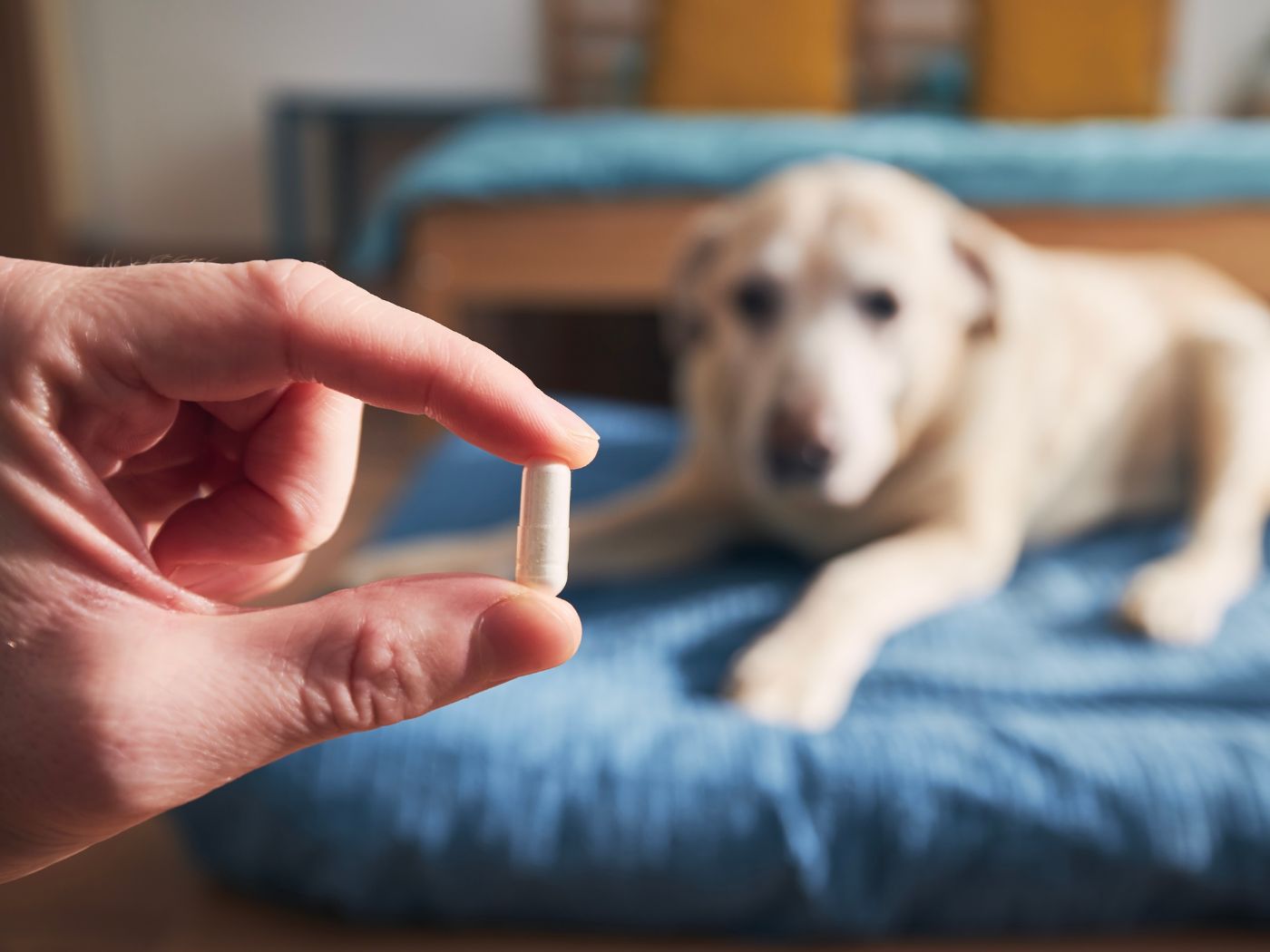There are many things you can do to improve your fussy dog's eating, but first it is really important to rule out a variety of common health issues and feeding mistakes that could be contributing to the problem.
1. Could your dog have an underlying health problem?
If your dog has always been a good eater, then a change in their eating habits can be a sign of a health issue. If this is the case, and especially if there are other symptoms such as weight loss, poor skin and coat, vomiting, diarrhoea, constipation, lethargy, reluctance to move, smelly breath, pawing at the mouth or any obvious swellings, then you will need to see your vet.
There are many medical and surgical issues that can lead to a loss of appetite. Your vet will want to rule out any underlying issues such as infection, dental disease or oral injury, gastrointestinal disease or foreign body, constipation, cancer, kidney or liver issues, and pain.
If your dog has always been a bit picky with food and they have a clean bill of health, then read on for some more suggestions.
2. Is your dog actually hungry?
It might be that your dog is not actually fussy, they are just full already and are listening to their hunger signals.
Overfeeding is common in small and toy breed dogs who only need a surprisingly small volume of food. The feeding guidelines on pet food packaging are very general and every dog’s metabolism is different, so it is very easy to fall into this trap.
If you think you may be overfeeding then begin by weighing out your dog’s food on a set of kitchen scales at each meal, as using a measuring cup can be very inaccurate. Then monitor their food intake and weight. If they are eating enough to maintain a consistent weight, yet constantly leaving food in their bowl, then they are being overfed. If you weigh the remaining portions of food over a period of days then you’ll be able to work out how much to feed them.
Too many treats can also ruin your dog’s appetite. Treats should be restricted to less than 10% of your dog’s daily calorie intake. For smaller dogs, it doesn’t take many treats to reach this daily limit! Work out your dog’s daily treat ration and use them as a training aid only, rather than a constant source of snacks. If you think too many treats could be the problem, then eliminate them for a few weeks and see what happens.
Never give your dog treats if they haven’t eaten their food, this can inadvertently reinforce fussy eating behaviour as the dog quickly learns to wait out dinner as they know they will be given some treats later.
3. Is your dog’s food fresh and palatable?
Dry dog food can go stale very quickly when exposed to the air. With their very strong sense of taste and smell many dogs will reject their food if it smells even remotely stale. This then leads to a food aversion, which is exactly what we want to avoid.
Never leave your dog’s food sitting in their bowl for long periods of time. Feed a measured portion of food and remove any food that remains uneaten after 15-20 minutes.
Improper storage will lead to kibble losing its taste, aroma and nutritional value. If you find your dog is getting halfway through a bag of food and then suddenly decides he doesn’t like that food anymore, then this could be a storage issue.
We recommend that you store your dog food in a cool, dry place. Modern pet food packaging is carefully designed to help keep food fresh, so keep the food in its original packaging, with excess air squeezed out and the top tightly closed. (We are hoping to introduce some new packaging with a zip lock top soon to help you with this). You could go one step further and store it in the bag and inside an airtight container as well. But we don’t recommend pouring your whole bag of kibble into an airtight container, as the more kibble that gets eaten the more air the remaining kibble in the container is exposed to and the higher the likelihood of it going stale.
4. Where and how are they fed?
Are you feeding your dog in a really busy, noisy part of the house? Are the kids distracting your dog at mealtimes? Some fussy eaters are just dogs that easily lose focus and need a quiet, calm space in order to eat. Some dogs are intensely private and don’t like to eat when there are other animals around, whereas some eat better in a competitive environment!
Could your older dog be finding it painful to bend their neck down to their bowl? If so, try an elevated bowl that matches your dog’s height to allow them easier access to their food.
If you have a flat faced dog such as a Bulldog or a Pug then the shape of their bowl can actually physically impact their ability to eat. You can now buy slanted or tilted bowls that suit these guys much better. There are also some dogs who just don’t like bowls! These dogs respond well to simply scattering their food on the ground or being fed on a flat feeding mat.
5. Could your dog have a genuine food aversion?
Back when I was at vet school I made the mistake of getting a chicken pie from a petrol station one day. The results were not pretty! It took me many years to consider eating a chicken pie again. The same thing can happen with our pets. Usually, it’s not an issue with their actual food, but an association. For example, they may develop vomiting or diarrhoea due to something yucky they have picked up off the beach, but then go on to associate feeling awful with the kibble they are eating at the time.
Sometimes just a very rapid diet change can be enough to cause a problem, especially if you are changing to a diet with very different protein or fat levels. If a sudden change in diet causes a tummy upset, then a dog will often develop a food aversion to that diet and diets that taste similar (commonly diets with the same protein type) due to the negative experience they have had.
Finally, if your dog frequently has loose stools or is constantly farting then they may have a food intolerance or food allergy. Sometimes these dogs have concurrent skin issues. There is some more advice on managing potential food allergies here.
In all of these situations the best thing to do is to change (very slowly!) to feeding a different food, with a different protein source.
6. Could your own anxiety be contributing to the problem?
Having a pet who is not eating well can be very stressful and pet owners can get pretty anxious about their pet’s eating behaviours. Sensitive dogs can pick up on our anxiety and begin to associate this with mealtimes, making things worse.
If you think this is happening, then try getting someone else in the household to feed your pet for a while and see what happens. You can also reduce human contact at mealtimes by using a timed automatic feeder or just placing your dog’s food in another room in the house and letting them wander in and eat on their own, without the pressure of you watching over them.
7. Has your dog trained you?
Many dogs appear to be fussy eaters, but really they have just outwitted us! What commonly happens is that your dog suddenly decides he doesn’t want his food. Your concern leads you to tempt him with whatever you have on hand. It could be treats, some table scraps or maybe it’s a tin of cat food. Whatever it is, some dogs are smart enough to make the connection that if they decide to not eat their food a smorgasboard of further options will appear and they milk it for all its worth!
Most healthy dogs will not starve themselves so the best way to sort this problem out is to play hard ball. Before you do this you are obviously going to ensure that you’ve covered all the bases above – your dog is healthy and you’re confident they have no genuine food aversions, the food you will offer is fresh, you’re certain you’re feeding the correct amount of food and there are no issues with distractions, physical feeding issues or your own anxiety playing a part.
Start with having a set mealtime twice a day for your dog. Offer a measured amount of food at this set time and then take away any food left after 15-20 minutes. At the next mealtime offer a fresh meal and follow the same process. Usually, a dog will not miss more than 2-3 meals before realising the game is up and it’s time to eat.
This is a fairly gentle version. For those who want to try an even more hardball approach I have seen this version recommended in numerous dog groups.
I’ve tried all of this and I still have a fussy eater - what next?
In part two of our series on fussy eating, out next week, we will cover off some extra tips including:
- Smell and texture of foods
- Timed exercise
- Enrichment feeding ideas
- Using toppers effectively
- When to try a new and (hopefully) tastier food
- How to introduce a new food successfully so you don’t end up on the constant treadmill of new foods!
- My rule of 3 for protein selection



